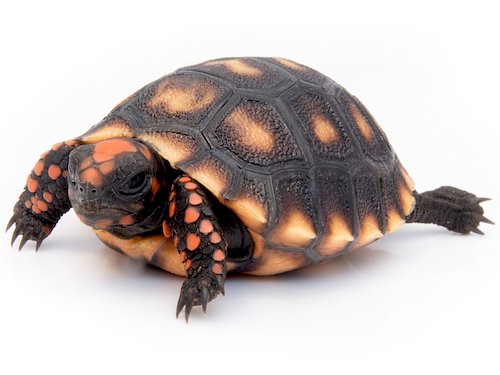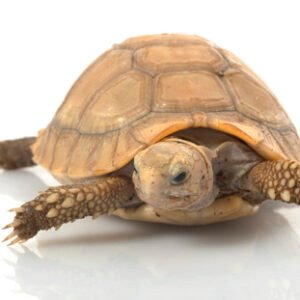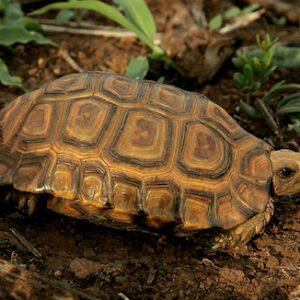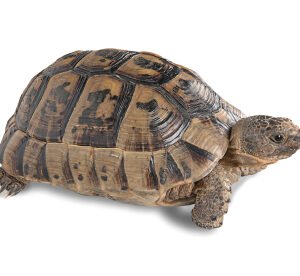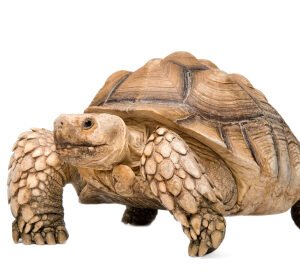Understanding the Cherry Head Red Foot Tortoise
The Cherry Head Red Foot Tortoise (Chelonoidis carbonarius) is a captivating reptile, notable for its vibrant coloration and appealing characteristics. Native to the tropical regions of South America, particularly the rainforests of Brazil, Paraguay, and parts of the Guianas, this species thrives in humid environments that allow for its natural behaviors. In the wild, these tortoises typically inhabit areas rich in foliage, providing ample access to the vegetation they require for a balanced diet.
Physically, Cherry Head Red Foot Tortoises are distinguished by their strikingly colorful shells, which can range from dark brown to black, adorned with bright red, orange, or yellow markings. Adult tortoises can grow to be 10 to 14 inches in length, although some exceptional individuals may reach up to 18 inches. Their robust frame and distinctive appearance make them easily recognizable among tortoise enthusiasts. A healthy tortoise should have a smooth, well-formed shell with no signs of disease, such as swelling or discoloration.
Behaviorally, these tortoises are known to be social animals, often displaying curiosity and a willingness to explore their surroundings. They exhibit a diurnal lifestyle, meaning they are most active during the day. In captivity, it is crucial to provide a stimulating environment that mirrors their natural habitat, including the right temperature gradients and hiding spots. Unlike other tortoise species, the Cherry Head Red Foot Tortoise requires a diet rich in fruits, vegetables, and flowers to maintain optimal health.
In comparison to other tortoises, the Cherry Head Red Foot Tortoise stands out for its vibrant coloration and specific care needs, making it a popular choice among reptile enthusiasts. Understanding these unique attributes and care requirements is essential for those considering adding this remarkable tortoise to their family.
Essential Care Tips for Cherry Head Red Foot Tortoises
Caring for a Cherry Head Red Foot Tortoise involves understanding its unique requirements to ensure a healthy and fulfilling life. These tortoises thrive when provided with a balanced diet, a properly designed habitat, and regular health monitoring. A diet rich in leafy greens, fruits, and specially formulated tortoise pellets is essential for maintaining hydration and satisfying their nutritional needs. Leafy vegetables like collards, dandelions, and kale should form the basis of their diet, while occasional treats like berries and mango can offer variety. Avoid high-protein foods as these can lead to health issues.
The habitat of a Cherry Head Red Foot Tortoise should mimic their natural environment to the greatest extent possible. This involves setting up an enclosure that includes both moist and dry areas, creating a microclimate that promotes their wellbeing. The ideal temperature range is between 75°F and 85°F during the daytime, with a basking area that reaches 90°F. Humidity levels should be kept around 60-70%, which can be achieved through regular misting and providing a water dish. A hiding space, such as a log or commercial tortoise hide, helps reduce stress and allows them to feel secure.
Handling your Cherry Head Red Foot Tortoise should be approached with care, promoting trust and comfort. Hold them gently, supporting their body to prevent injury. Limit handling to short sessions to reduce stress, particularly when they are adjusting to their new home. For mental stimulation and exercise, incorporating enrichment activities is beneficial. Enrichment can include creating obstacle courses or providing various textures and scents for exploration.
Common health issues in Cherry Head Red Foot Tortoises include respiratory infections and shell rot. Regularly monitoring their behavior and habitat conditions can help in early detection of health issues. Keeping an eye on their appetite and activity levels is crucial. Routine veterinary check-ups are advisable to ensure their health; knowing when to consult a veterinarian can prevent minor issues from escalating into serious concerns.

